26 Jul INSIDE OUTSIDE, UPSIDE DOWN
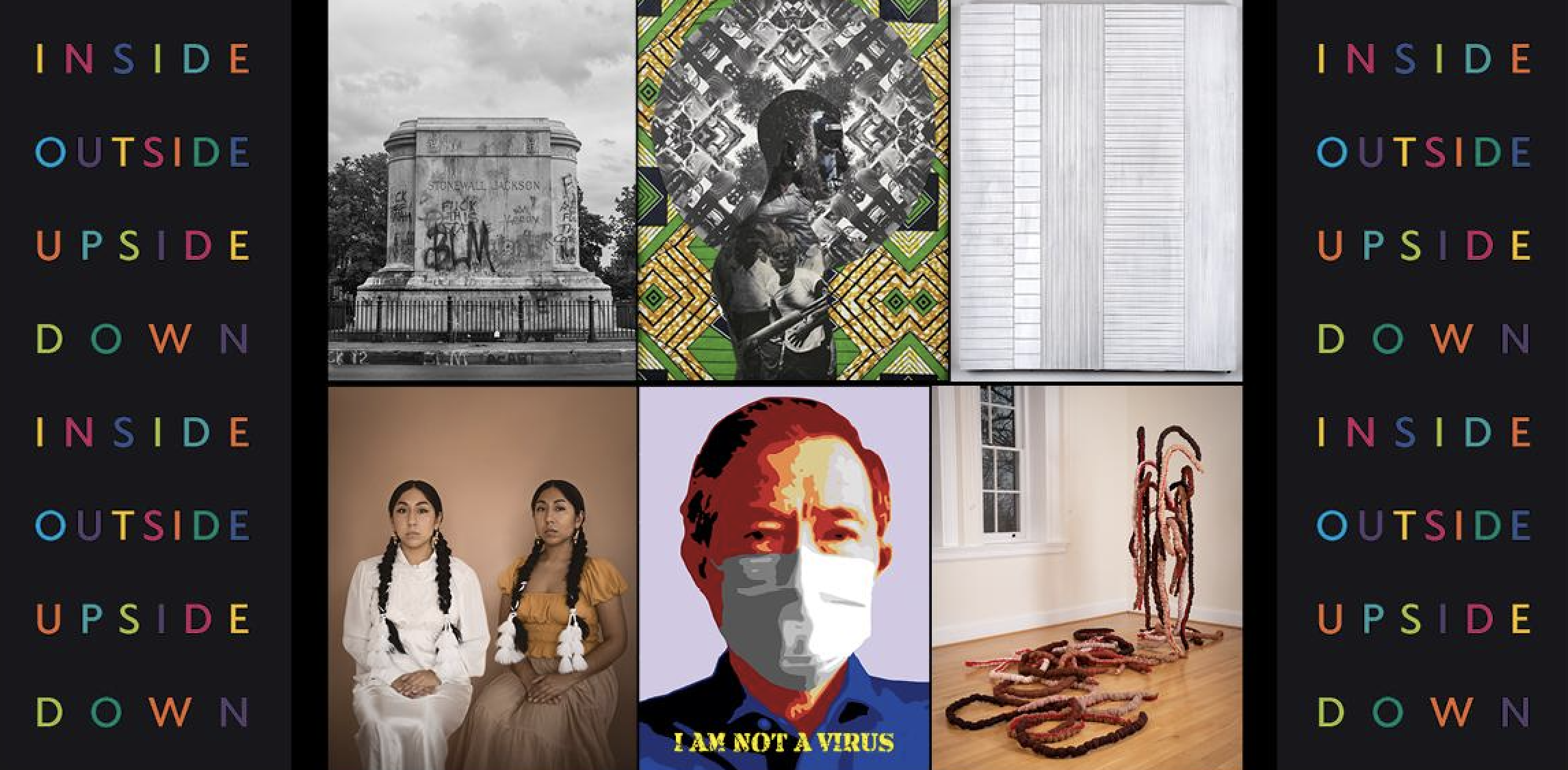
Happening Now, a juried invitational, INSIDE OUTSIDE, UPSIDE DOWN at the Phillips Collection in Washington, DC. The exhibition is open to the public from July 17-September 12, 2021.
“Featuring dynamic work across media by 64 artists of the greater DC region, this juried invitational celebrates The Phillips Collection’s 100th anniversary, building on the legacy of founder Duncan Phillips and his commitment to presenting, acquiring, and promoting the work of artists of the greater DC region.”
Inside Outside, Upside Down offers a slice of the turbulent past year, one that left us confused, battered, and disoriented. Out of the palpable thoughts and feelings expressed in the works on view, five themes emerged: “Innocence Interrupted” recognizes the young children and young adults whose lives were upended by the constant fear and uncertainty brought on by so much violence and death; “Days of Reckoning and the Right to ‘Be’” speaks to the forced realization that our country is at a major crossroads, as many long-established societal systems have become increasingly out of touch, obsolete, and even detrimental to a population whose needs are constantly evolving; “Bearing Witness” represents the artists who document the times in which they live, making sure that we record, reflect, and remember; “Introspection and Reflection” examines what happens when Washington, DC, is forced to come to a standstill, with some of us sitting quietly with ourselves, while others had to confront the dynamics of their relationships; and “Hope and Healing” illustrates how art has the ability to help us process and heal in times of pain and great loss, allowing us to celebrate the simple joys in life.
Taken together, the works in this exhibition affirm the human need to make sense of traumatic experiences and ultimately transcend them, either by creating from that place or in spite of it. In this way, these works offer a collective call for healing. They invite us to appreciate the beauty in the world around us, find comfort in our family and friends, and unearth the things that are revealed to each of us when life requires us to sit still with ourselves.
Featured in this show is Mason School of Art Faculty, Chawky Frenn, Former Adjunct Faculty, Nikki Brugnoli and Amelia Hankin, and Alumni Sarah Dolan.
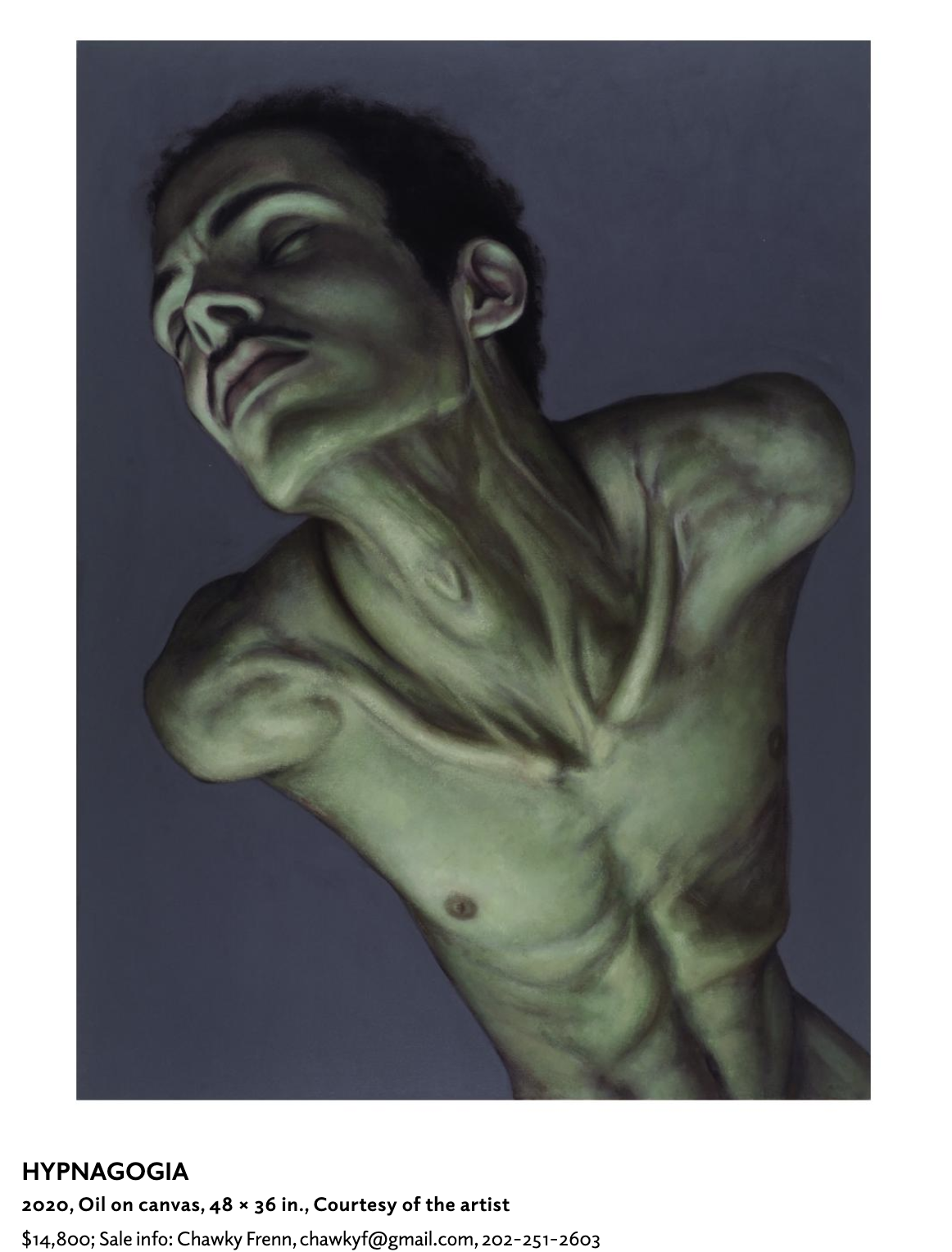
ARTIST STATEMENT CHAWKY FRENN:
As a Lebanese immigrant fleeing a war-torn country in 1981, coming to the United States was coming to a land of opportunity, a beacon for democracy, and the pinnacle of human rights. Through years of living and observing our ideals and politics, I learned that even in the Land of the Free basic human rights were always fought for, never given by the ruling powers.
Hypnagogia, a transitional state of consciousness between wakefulness and sleep, with vivid sensations of floating, falling, and impending threat, alarmingly reflect the political, economic, religious, and moral predicaments that shamelessly emerged in 2020. The painting questions the identity, core principles, and values the United States upholds. Unscrupulous policies legalize corruption and assault basic rights with vindictive measures. Self-righteous patriotic mantras oppress dissent, generate prejudice, and grant immunity to war criminals. Religious dogmas consecrate submissive beliefs, bless compliance, and sanctify hatred of those with different convictions. Economic policies advocate unrestrained greed, cruel exploitation, and callous consumption over environmental, human, and civil rights. Justice systems, afforded by the rich and the privileged, sanction laws authorizing mass incarceration of the marginalized and supply legalized slavery to private for-profit prisons.
With a history rooted in structural racism, momentous struggles, and critical resistance endeavor to ensure the rights of Native Americans, African Americans and other people of color, women, LGBTQ, veterans, immigrants, prisoners, and refugees. In recent times, latent hypocrisy brazenly reappeared, exposing the Inside Outside and turning Upside Down the values that made America great.

ARTIST STATEMENT NIKKI BRUGNOLI:
RISE was born out of an experimental series I started in August 2020. The reality of the pandemic has meant a reorientation of HOME—home as both living and working space; spending much more time at home; or losing the ease of “traveling back home” to see my family of origin/extended family in Pittsburgh. In a reflection of these shifts during the pandemic, I created new rituals and practices to find, identify, and conjure a sense of grounding within my work, thus giving shape to a collection of moments in 2020–21. RISE aims to be a physical embodiment of reach, longing, expansion, and, in many ways, the unattainable. As an artist, I look to the horizon, which is always in sight but never within reach: the infinite and finite. It beckons and draws me into the immediate present, while simultaneously stretching my memories and imagination for other places in time. The repeated silkscreen image in RISE was taken from a specific landscape connected to my home that has my son embedded in it. He stands alone in the garden we created in March 2020. Tilling left us tired and blistered, but we loved working together in the dirt, planting seeds, and waiting to see what would take root in a new landscape. When the photo was taken, it was late summer, the garden bursting with life and wild with weeds and mosquitoes. My son gazes up at the sky. This fleeting moment captures a kind of isolation, mystery, and independence. It nods to the resilience so many of us discovered during this uncertain and challenging time.
ARTIST STATEMENT AMELIA HANKIN:
The series of drawings is a nod to the poem “‘Hope’ is the thing with feathers” by Emily Dickinson. It is a poem that, throughout the years, I have read many times. But this particular year, its message and metaphor felt more raw, weighted, and powerful. The human capacity for hope, depicted in the poem, inspired me to create drawings about renewal—captured in the imagery of nests. The nests are solo and unattended, depictions of tangled structures built to nurture new life and growth. The bird is absent, but its work is done. The nests represent the human need for hope and the calm, quiet resilience of the human soul. Overall, my work uses familiar objects that have been assigned meaning, emotional weight, and purpose: folded paper that predicts the future, feathers that catch our dreams, nests that represent hope and renewal, and repeated butterfly wings that represent change. By the impositions of context and tradition, these images form connections with birth, regeneration, and death. Brought together, they acknowledge the microcosmic forces outside of our authority, which impact our lives in small but tangible ways.
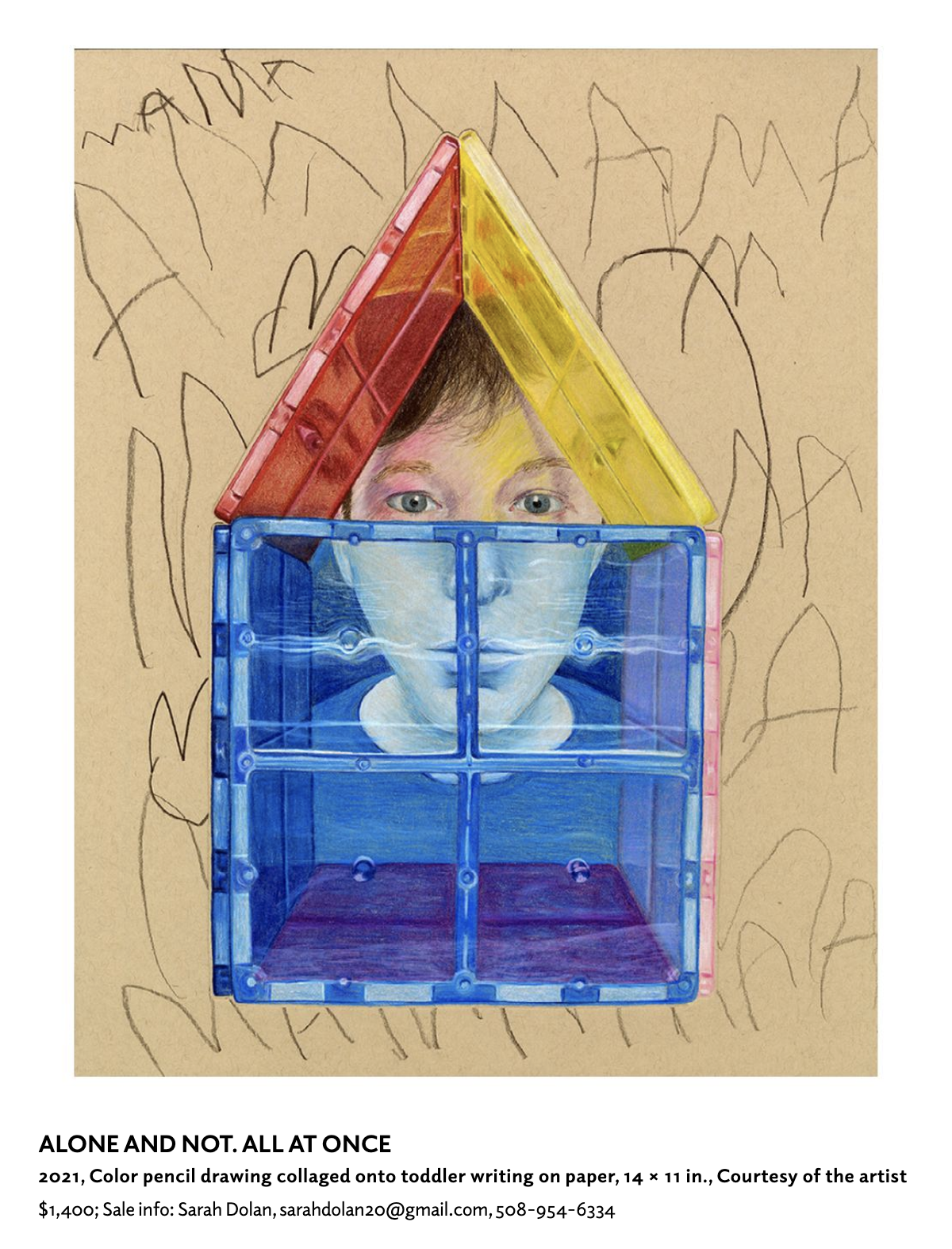
ARTIST STATEMENT AMELIA HANKIN:
In this piece, I depict myself looking out of a house made from my daughter’s colorful magnetic tiles. My daughter uses these to build houses for her toys to play in. All-day I play with my daughter, which is not so different from what life was like before the pandemic, except now we cannot leave. There are not as many playdates, there are no playgrounds full of children that she can play with, there are no more story times at the library, and there is no preschool. With fewer options for safe childcare, mothers have found their roles at home magnified throughout the pandemic. Many mothers are burned out after a year of living this way. Even though I am socially distanced from most of my peers, I am never physically alone. There is always the sound of my child saying “Mama” somewhere near me. It is the odd feeling of being alone and not. All at once.
VIEW DIGITAL PUBLICATION HERE

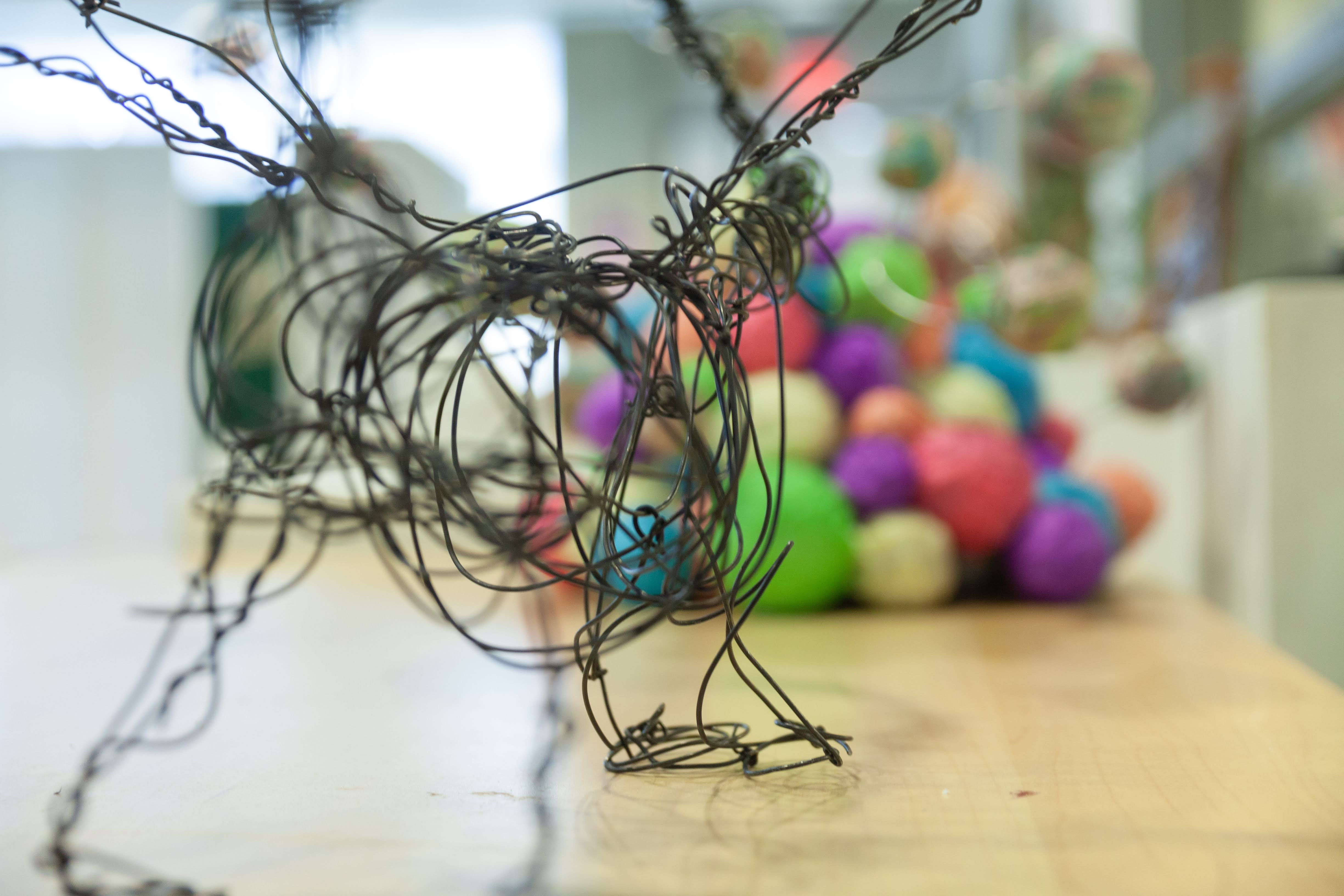
Sorry, the comment form is closed at this time.